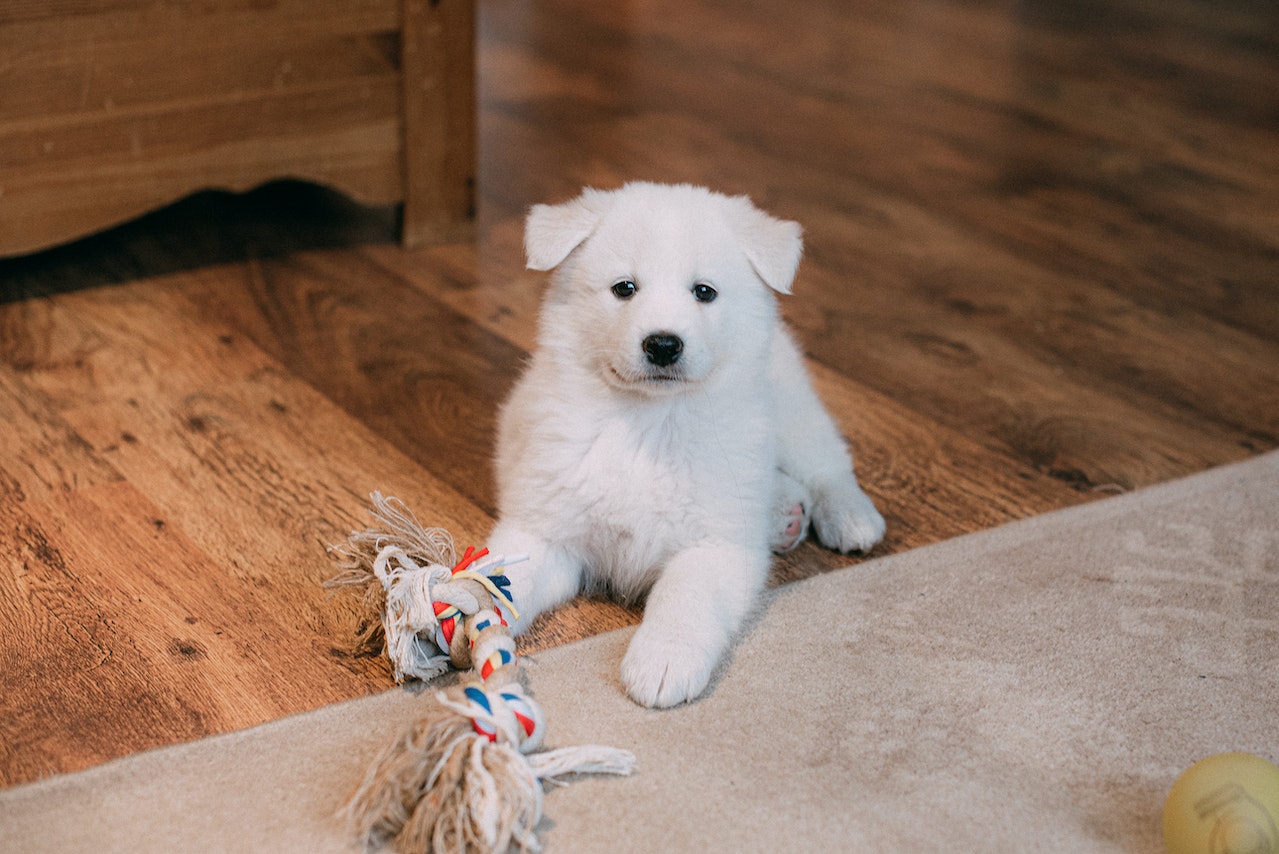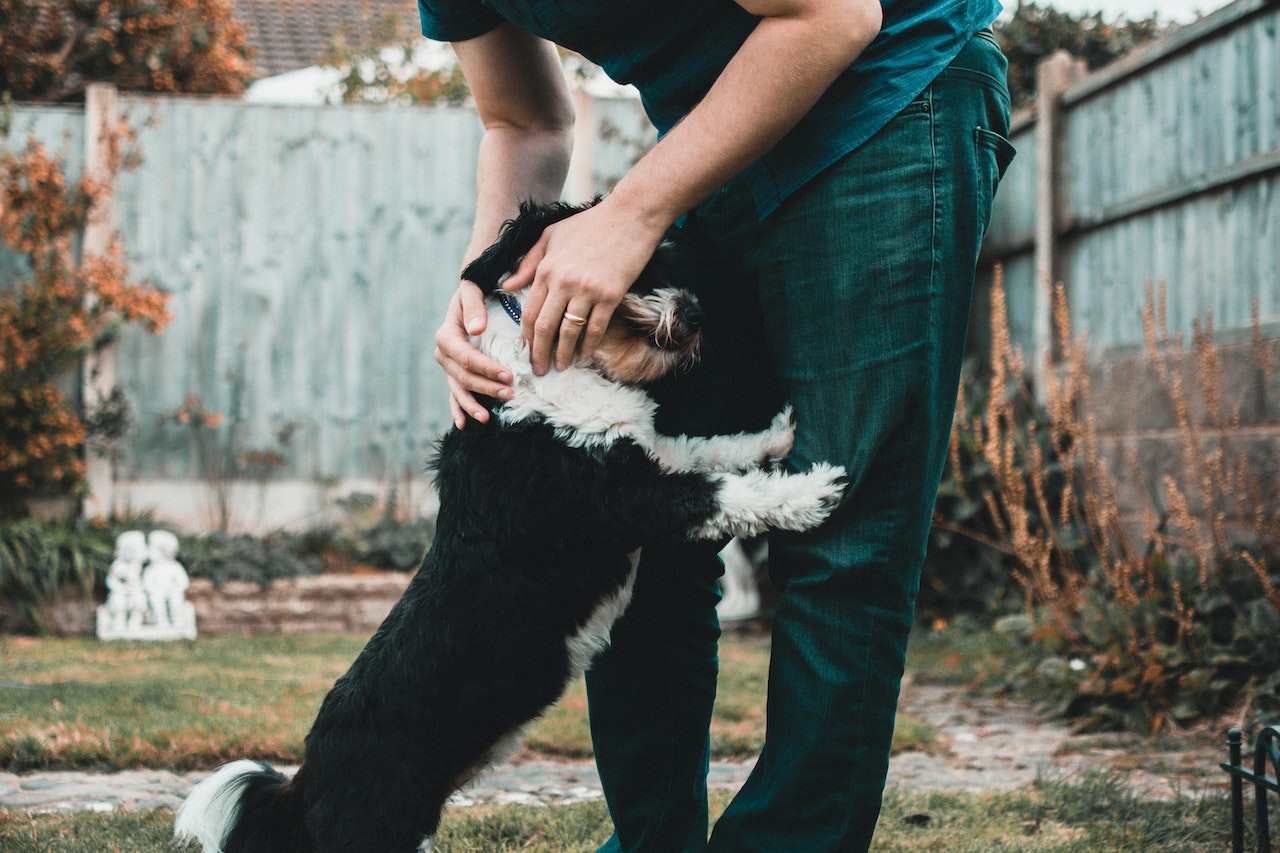When the pup dashes towards its humans and pounces towards them - more specifically, their faces - it reacts like all puppies who greet mum, dad, aunts and siblings when they return home: he tries to get at the flews and like that a bite of to get the spoils of the hunt. In the dog family he is successful: he can satisfy his hunger. In the human family he is mostly successful. The biped bends down, pats the puppy and talks to it in baby talk. Done right, the puppy learns and perfects jumping up during puberty. What a disappointment when instead of being tenderly stroked, the result is an annoying "Don't do that". No young dog can understand that and certainly not learn anything from it.

Jump. Me. Not. At!
If your pup is a jack-in-the-box, stock up on treats before entering the yard or house and throw a few chunks on the ground before he jumps. Better yet, hold a bite in your hand and run it up close to his nose. You reward the prompt sitting down with the candy and praise it in a flattering voice. So he should learn that he can satisfy his appetite when he sits. Later, you can introduce the "sit" signal verbally, replacing the "hello" with a bold hop with an expectant sit. Important: Suppress any emotion about the supposed leap of joy. The puppy registers this and acknowledges every exception with even greater efforts to reach your face.
Better manners, please!
You can continue this ritual with the adult dog once it has learned it. If not, you have to react with tougher bandages. Such an infantile demeanor does not have to be and can be annoying if it is a stately specimen. But often it is sheer indignation and your dog disciplines you. Because you have the house without him. Because the stress he had to endure when he was alone wants to discharge itself. Or because you encourage him with a stormy greeting ("Yes, I'm back!").

Look closely: the throwback to his childhood is characterized by a crouched posture, tail swinging and ears laid back. The "eternal child" can be heard squeaking and tries to climb up. You can recognize high excitement by the whipping tail, pricked ears, stormy leaping and rough jostling.
No words - top effect
In both cases, no reaction is the most effective counter-method. Because the guiding principle of all dogs is: "Repeat what was successful". You have to practice such a zero reaction. Scolding, shoving, frowning are also reactions that are better than nothing from a dog's point of view. But ignoring him and his actions means he's going nowhere. Walk past him, don't look at him, stay silent.
Take off your jacket and shoes and do something that has nothing to do with the dog: read, boot up the computer, unpack the groceries...
Only when the dog has calmed down do you turn to him. Then you can give him one treat plug it in, give it a pat or play with it. As improbable as that sounds, it takes effect very quickly. The unsuccessful jumping off becomes weaker and finally stopped altogether.









